Live oaks grace the U.S. South with their Spanish moss–laden branches and epic proportions. The oldest live oak tree, the famous Angel Oak of South Carolina, is estimated to be more than 400 years old. To say that the live oak is a tough tree might be an understatement. Its innate resilience and adaptability to many types of soils and conditions make it an excellent native shade tree for the home landscape.
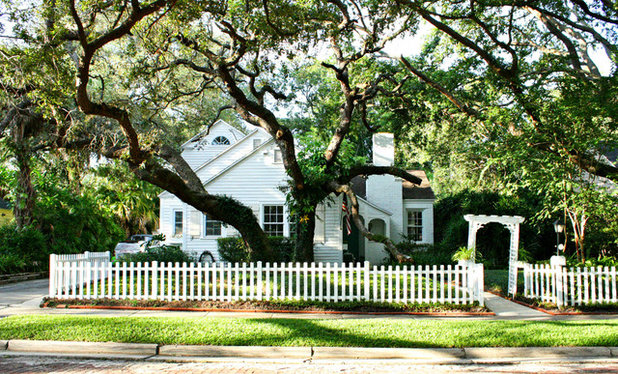
Mina Brinkey
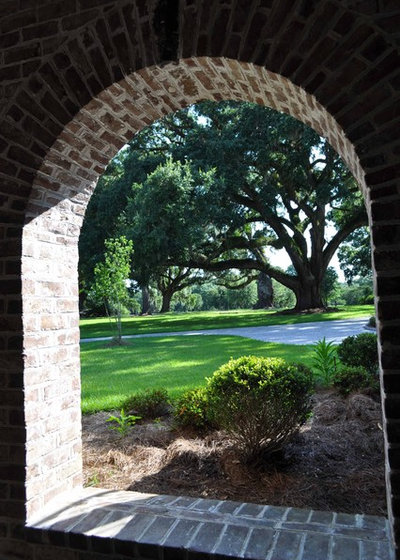
Frederick + Frederick Architects
Botanical name: Quercus virginianaCommon names: Southern live oak, live oak, coastal live oak
Origin and range: Native to coastal areas of the southeastern U.S.; its native range reaches from Virginia south to Florida and the Keys, along the Gulf Coast and into coastal Texas
Where it will grow: Hardy to 5 degrees Fahrenheit (USDA zones 7 to 11; find your zone)
Water requirement: Needs only light watering for a few years after transplanting to help it establish; once it’s established, let it go and provide no additional watering
Light requirement: Grows best in full sun
Mature size: It’s stunning and majestic; at maturity it can reach over 60 feet tall and 80 to 100 feet wide.
Benefits and tolerances: Southern live oak produces acorns that are a favorite of many birds and other wildlife; it also withstands drought, salt spray, high winds and tough urban conditions.
Seasonal interest: An
evergreen shade tree, live oak provides beautiful shade year-round.
When to plant: Anytime, but avoid planting during a drought
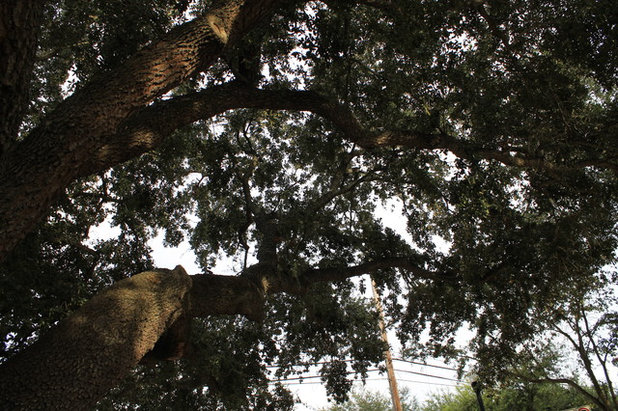
Falon Land Studio LLC
Distinguishing traits. The most revered trait of the live oak is its famously wide, arching canopy with dense leaves and branches that twist and spread toward the sun. Some of the trees that are hundreds of years old have lower branches that swoop down to touch the ground and then reach back up again.
Young trees may not have this habit in the early years, but you can still distinguish this species from other oak species by studying the leaves and acorns. The leaves of the live oak have completely smooth margins — no ripples or spines — and the acorn is about 1 inch long when mature in autumn.
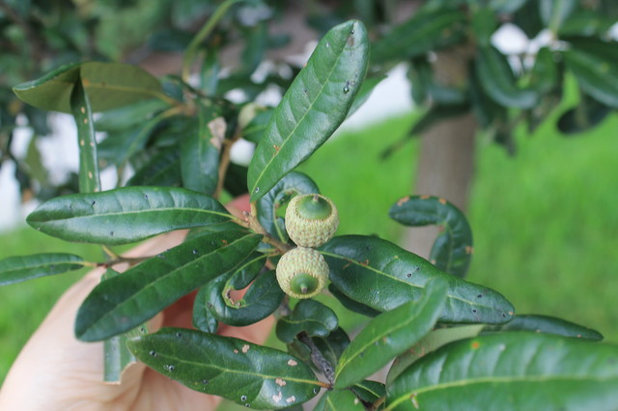
Falon Land Studio LLC
Shown: The developing acorns on a young live oak tree; notice the smooth leaf edges
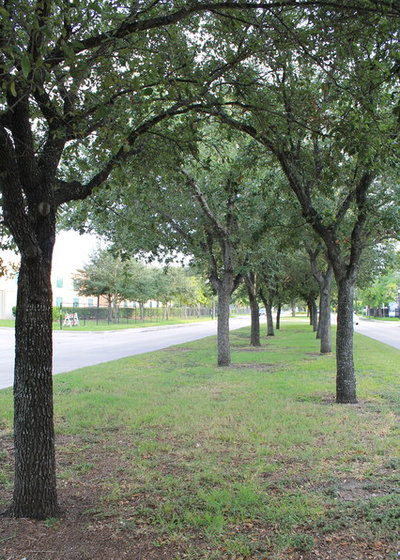
Falon Land Studio LLC
How to use it. Live oaks make a stunning row or allée (double row) when spaced equidistant apart, either staggered or centered along a driveway or walkway. The live oaks planted in a street median here are in a staggered allée and are just beginning to mature and spread their branches.
The trees respond very well to pruning and, when planted together in rows, will bend and reach outward to create that iconic grand Southern entryway.
Because live oaks tolerate drought and are adaptable to many conditions, they’re excellent planted near a street or sidewalk, as long as they’re given ample soil volume. The vast canopy spread makes each tree a superior specimen tree and a focal point of the landscape.
Plant live oak trees 15 or 20 feet away from a structure to give the canopy room to really spread. This tree is moderate to slow growing and does not have invasive or aggressive roots, so it can be planted pretty close to sidewalks without causing the sidewalk to buckle. Foundations are also not a big problem.
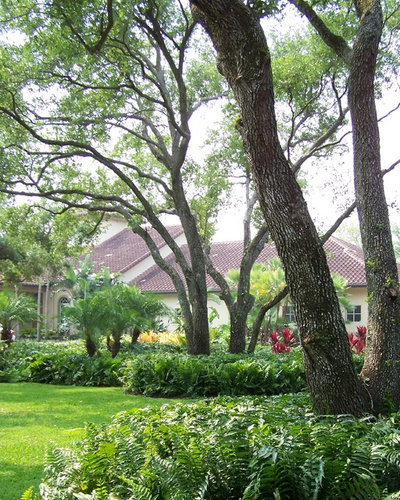
orlando comas, landscape architect.
Planting notes. Select trees that are field grown, not container grown, with one strong central trunk and an abundance of fibrous roots. Field-grown trees (this is true for many large shade trees) outperform container-grown trees because the young plants develop a better root structure in the ground than in a container.
Select the highest-quality tree you can find so that it establishes and persists for a lifetime. Unhealthy, poorly pruned or damaged trees are not good choices.
When planting your tree, dig a shallow and wide planting hole. Plant the tree so that the top of the root ball is just slightly elevated above the native soil and the ground tapers slightly away from the trunk’s base. This will ensure that the roots have access to oxygen at the soil’s surface.
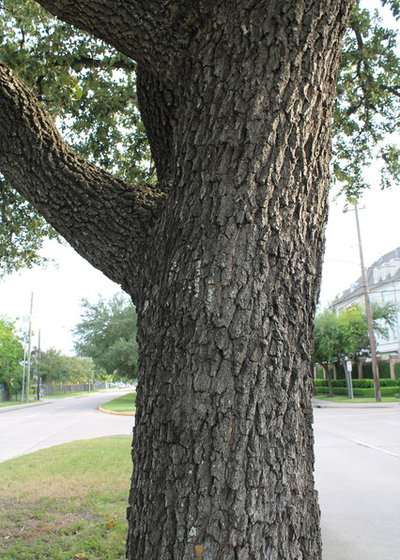
Falon Land Studio LLC
Pests. Oak wilt is a disease that affects live oaks and red oaks (
Quercus rubra) in Texas. It’s a fungus carried by a beetle that is most easily spread in springtime between trees that are touching. Proper pruning can help stop the spread of oak wilt.
Read more about pruning to help stop the spread of oak wilt

The Greenery Inc.
Pruning. The tree is best pruned and maintained in one of two ways:
- Maintain a very large specimen tree with only minimal pruning and give it free range to grow in a large space. With minimal pruning, the tree will develop a very dense canopy and deep shade underneath.
- Maintain the tree with an open canopy, as shown here, by regularly pruning away branches to let in more light. The open canopy will allow more light into the garden beds on the ground.





